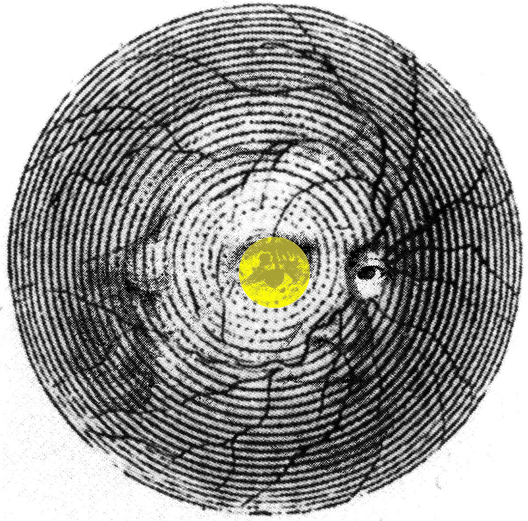Samuel Thomas Soemmerring1755–1830
Soemmerring combined interests in anatomy and electricity. In 1809 he developed an electric telegraph; it combined Volta’s battery with electrolysis and could send signals along 35 wires over long distances. However, his energies were most consistently applied to neuroanatomy and to his name in entitles the “substantia nigra” of the midbrain. This is an important encephalic structure which has a series of functions, among which are movement control and its dysfunction is involved in Parkinson’s disease. Among Soemmerring’s many contributions was the description of the gelbe Flecke (yellow spot) in the retina. He is shown in his diagram of the retina, with the gelbe Flecke suitably coloured. It was described thus: “Yellow spot surrounding the central hole, becoming darker towards the centre, and appearing gradually paler towards the periphery”. Soemmerring was concerned principally with anatomy and with the preparation of the eye prior to representing it. In 1801 he produced a set of eight detailed plates of the eye; most of the dissections depicted on the plates were reproduced three times, with the figures in them shown first in outline, then shaded, and finally colored. In addition to the sections of the eye, representations of the eyelids, ducts, vascular supply, musculature, and bones of the orbit are also printed. He reached, perhaps, the pinnacle of direct observation of the brain and its structures and produced beautiful engravings of sections of the eye. Soemmerring was sceptical about microscopic studies of the retina because of the potential artefacts that sectioning could induce, and because the simple microscopes were prone to optical aberrations. Such studies had been conducted since Leeuwenhoek directed his microscope to the optic nerve of the cow in the 17th century, but the power of the achromatic microscope was only brought to bear after Soemmerring’s death.
